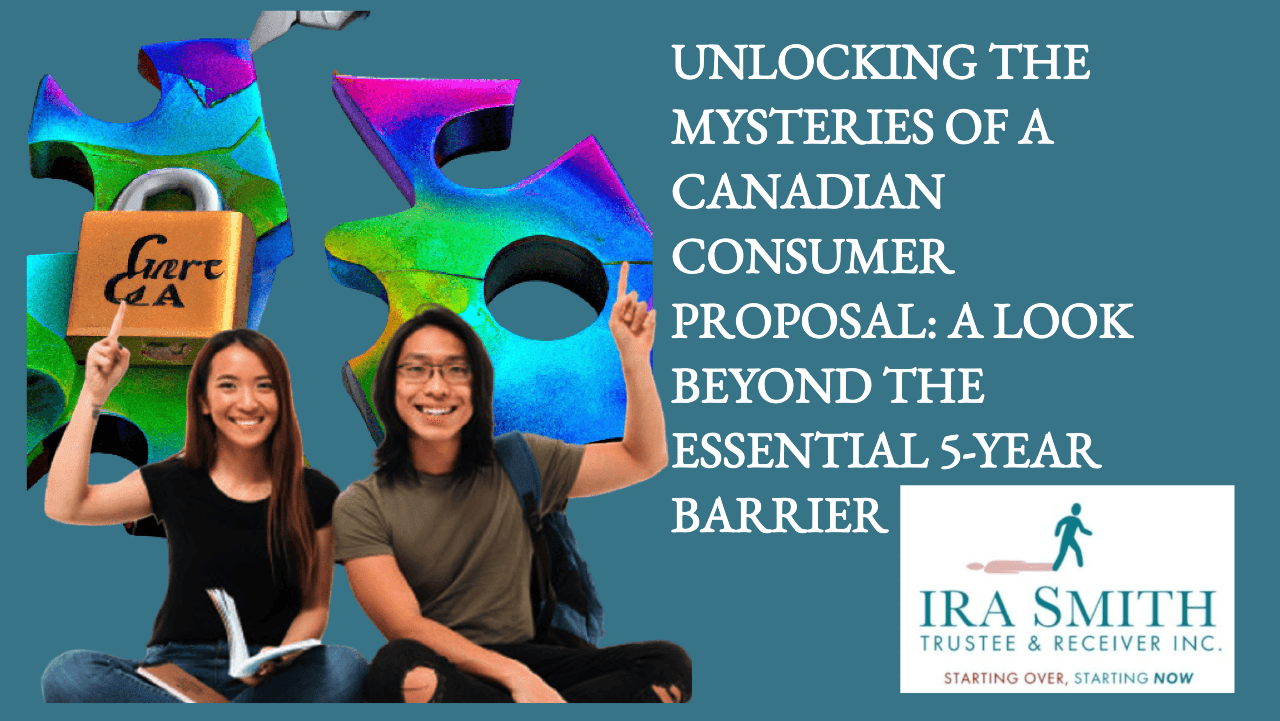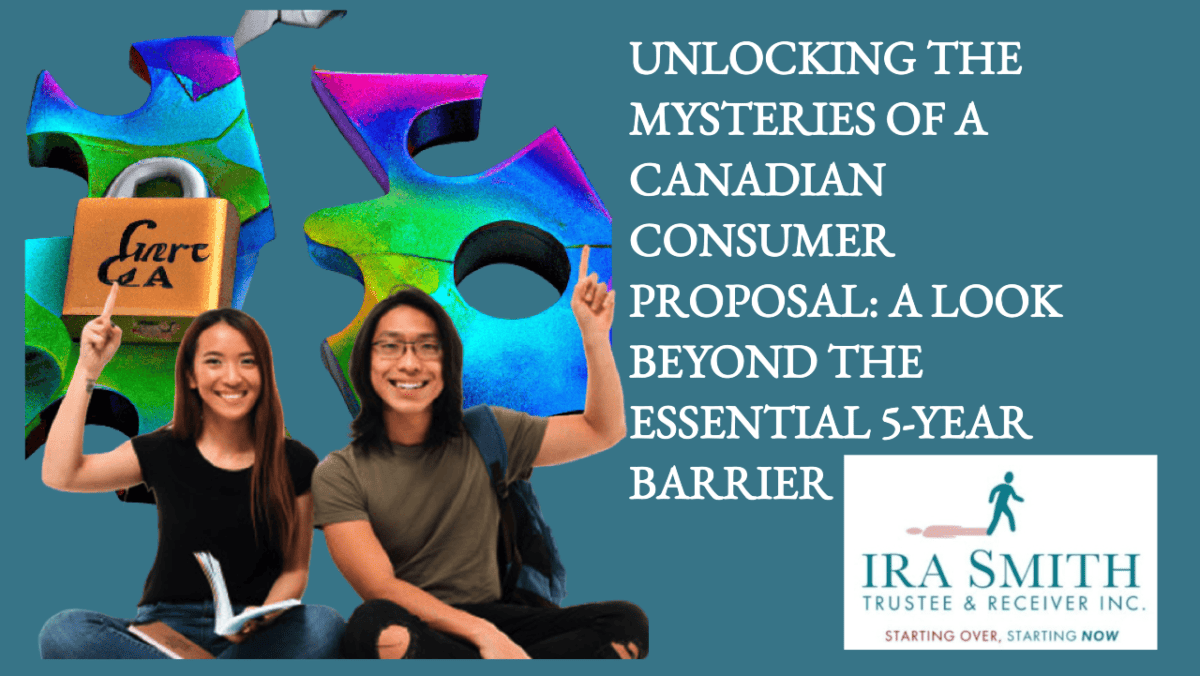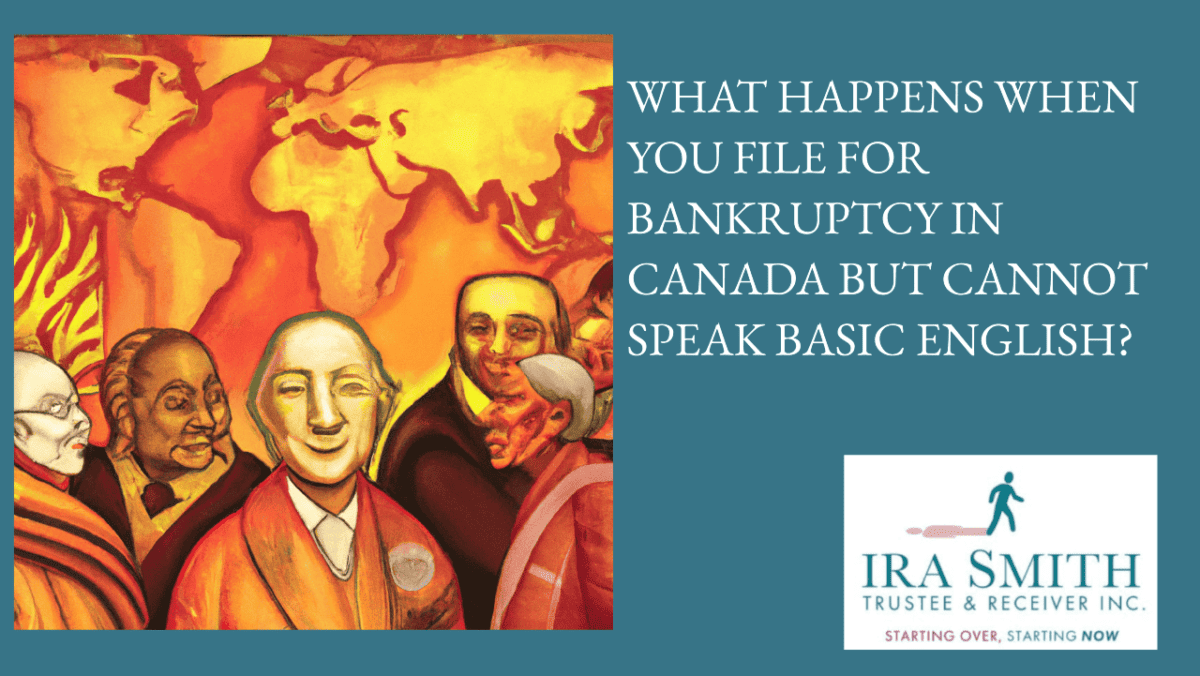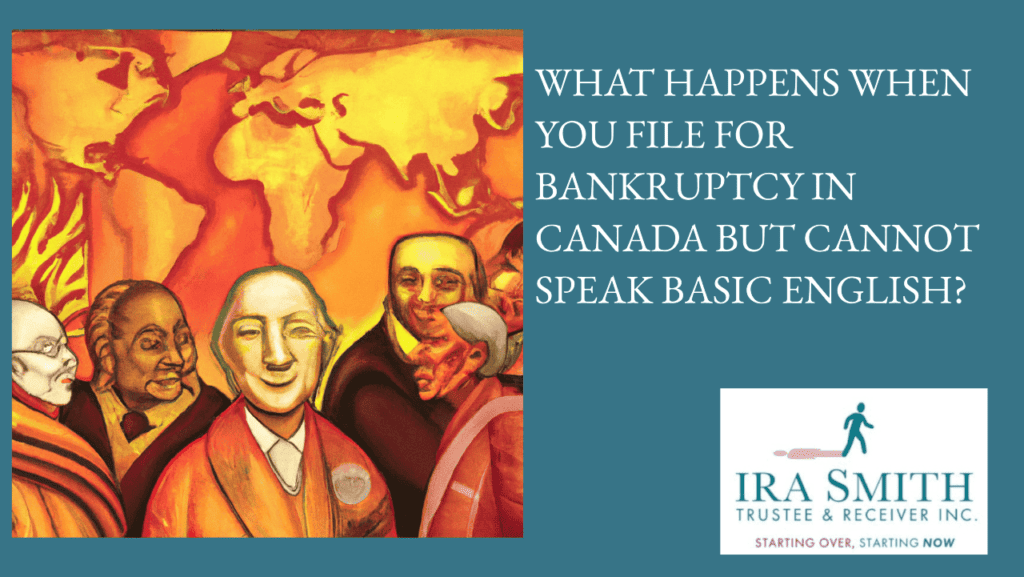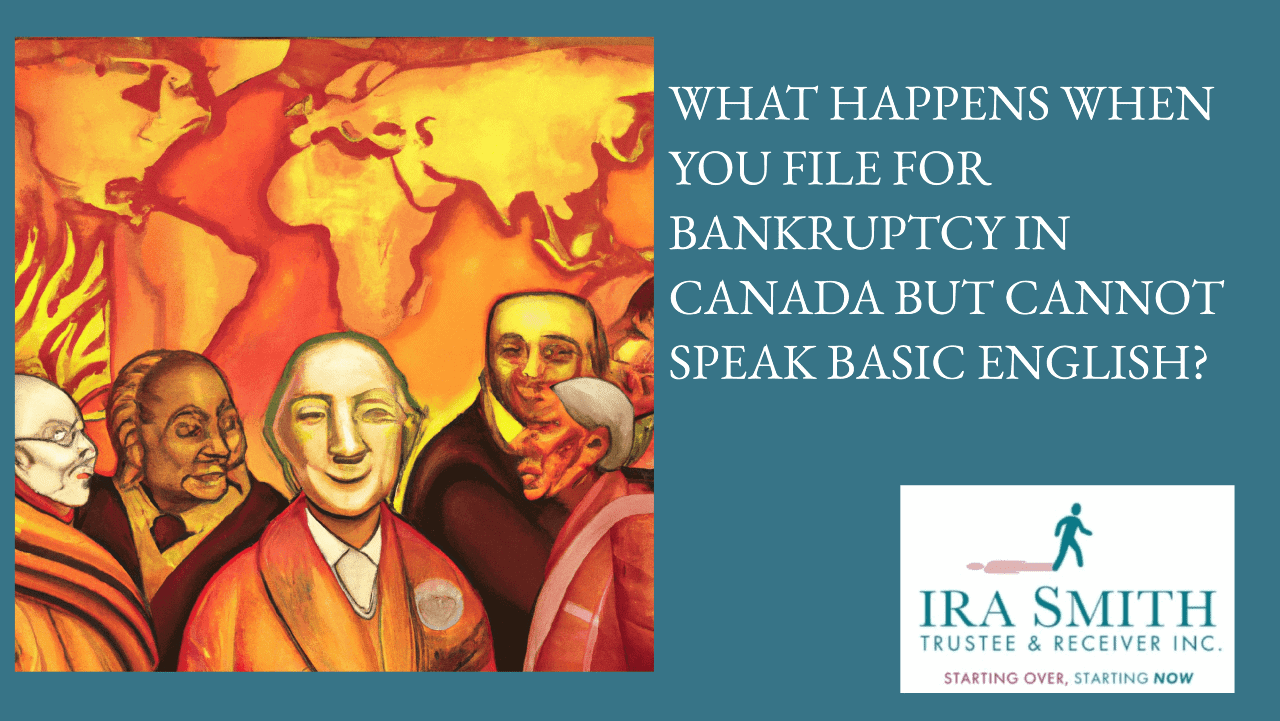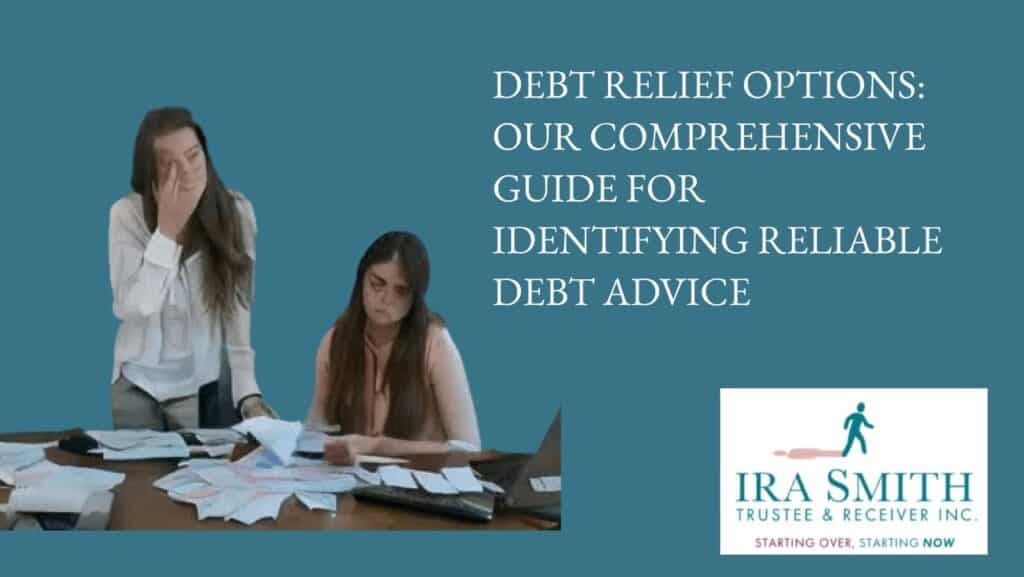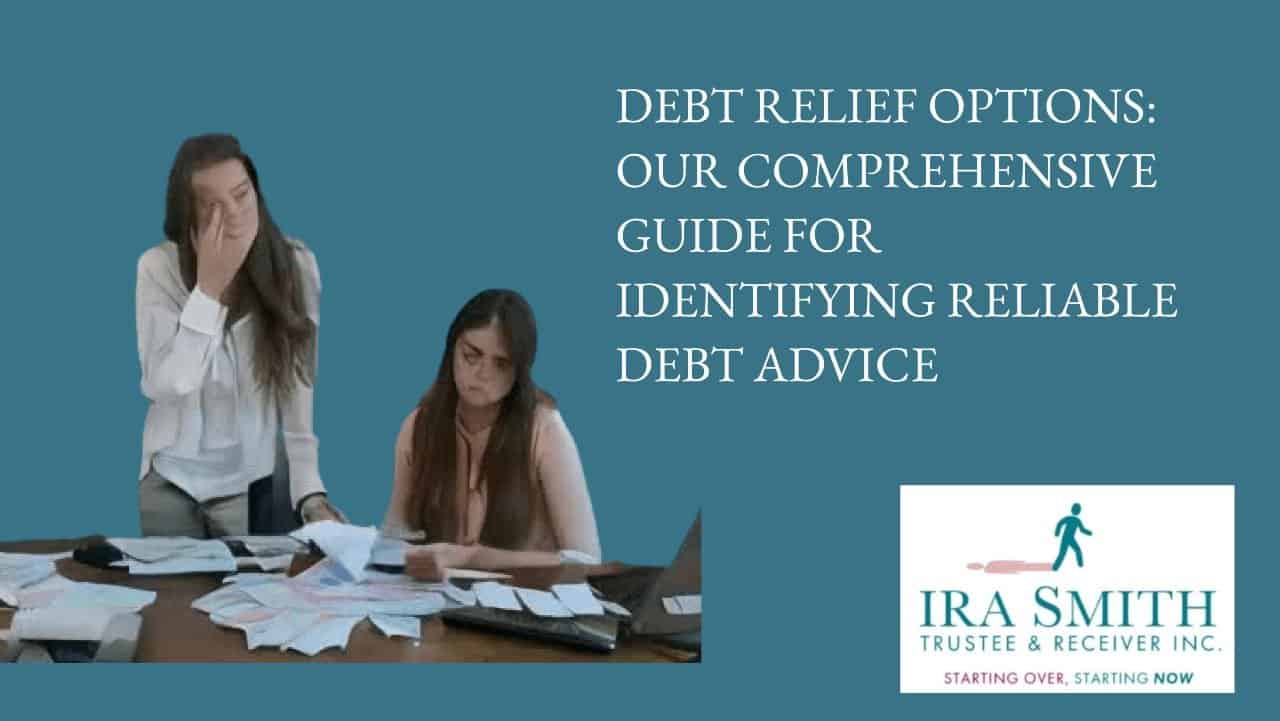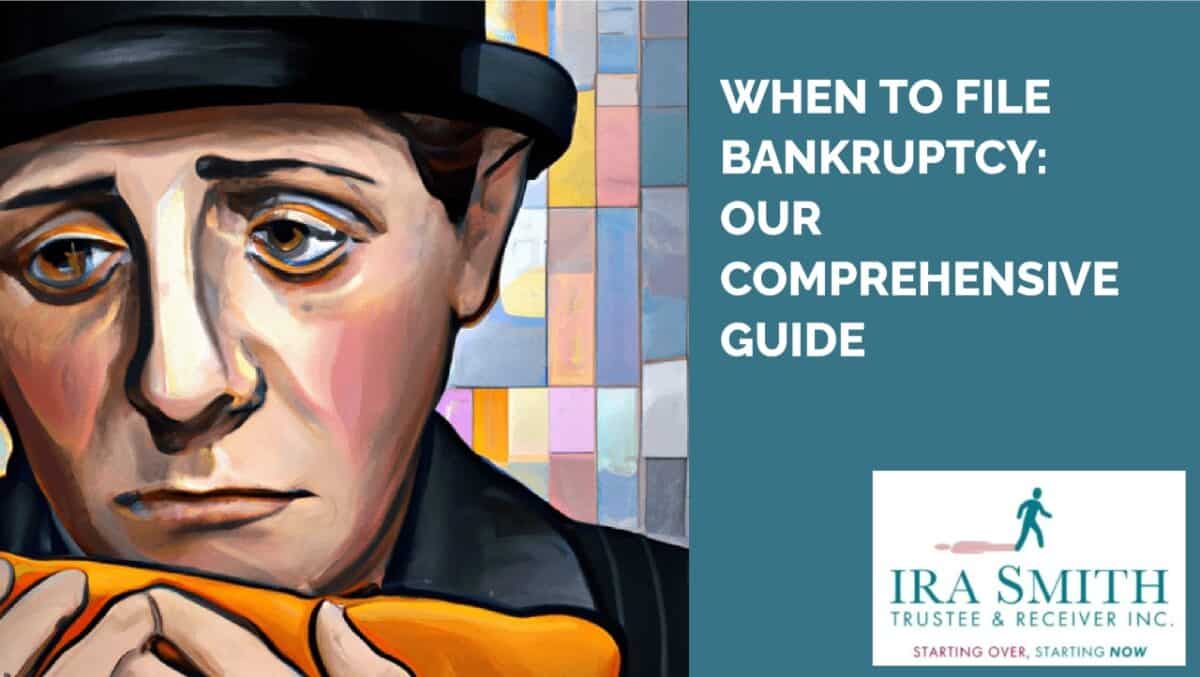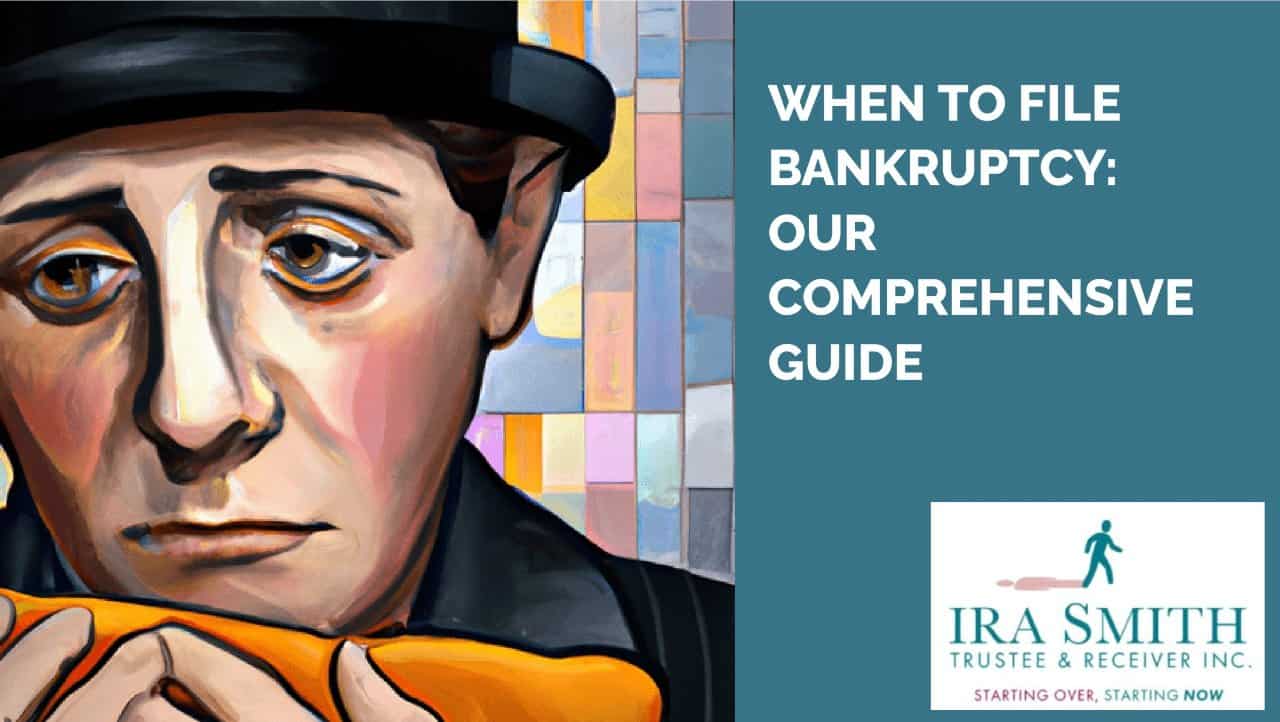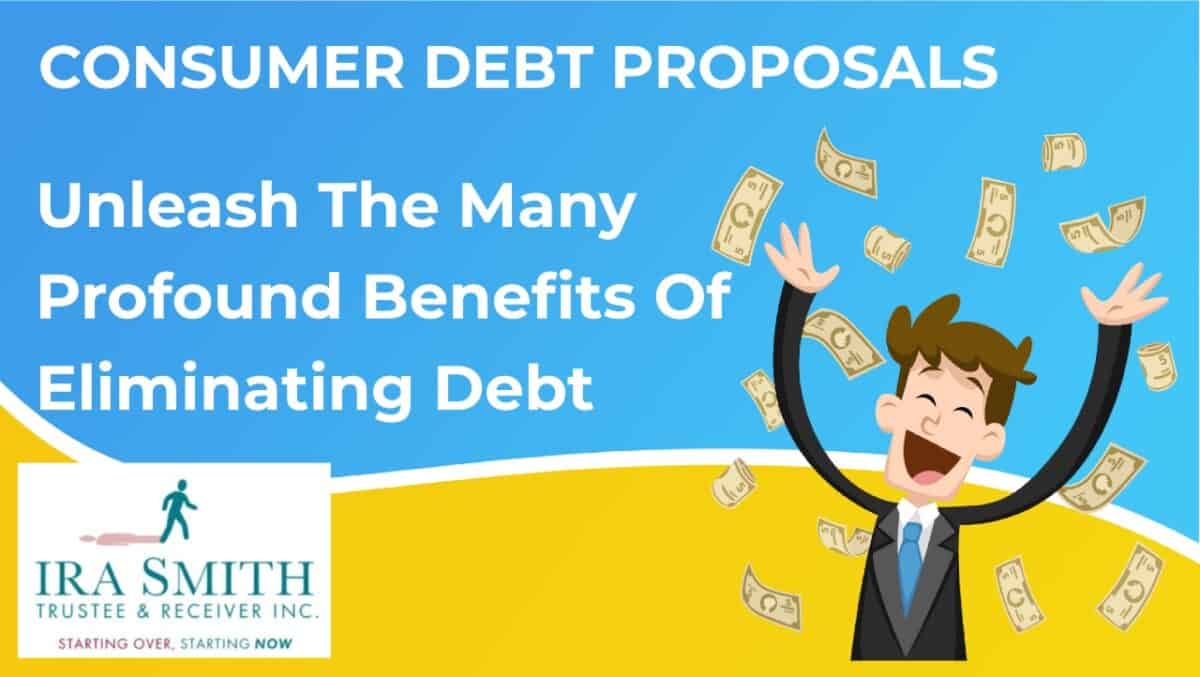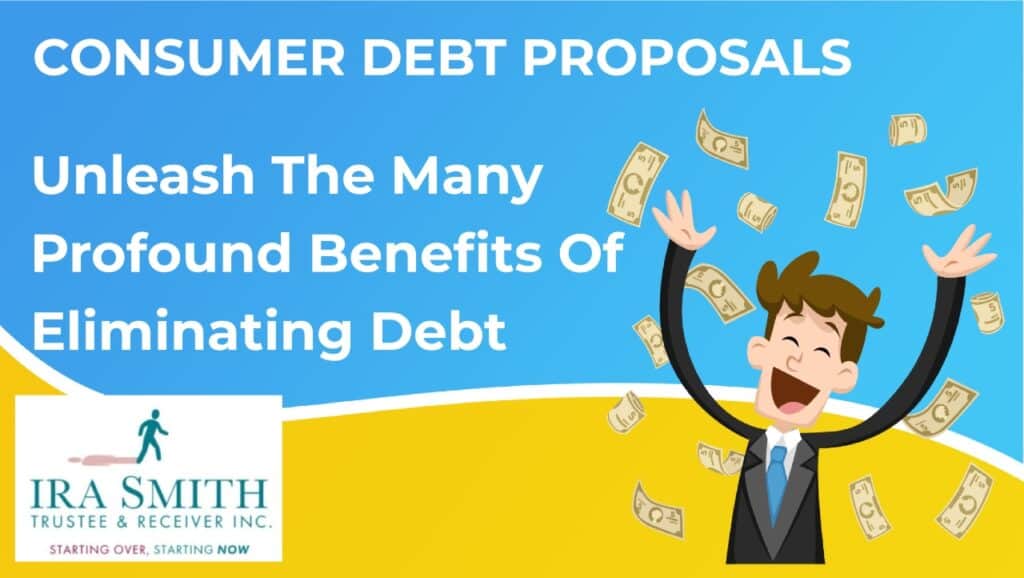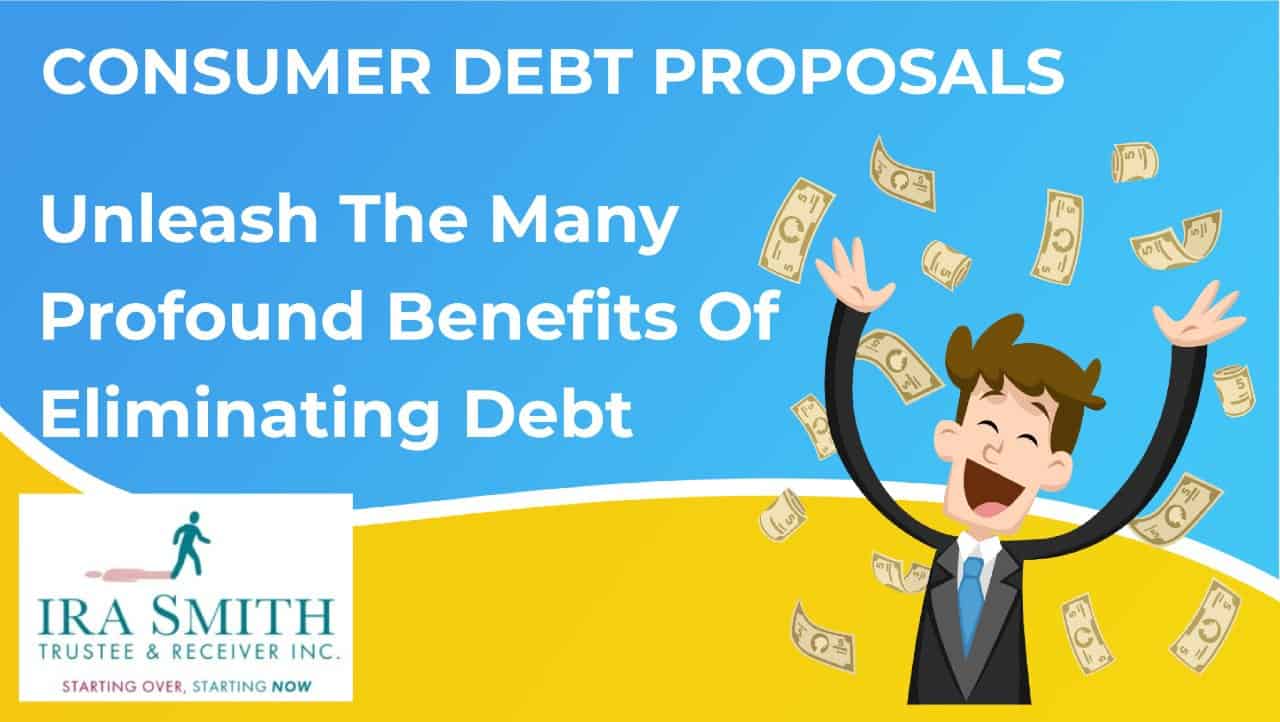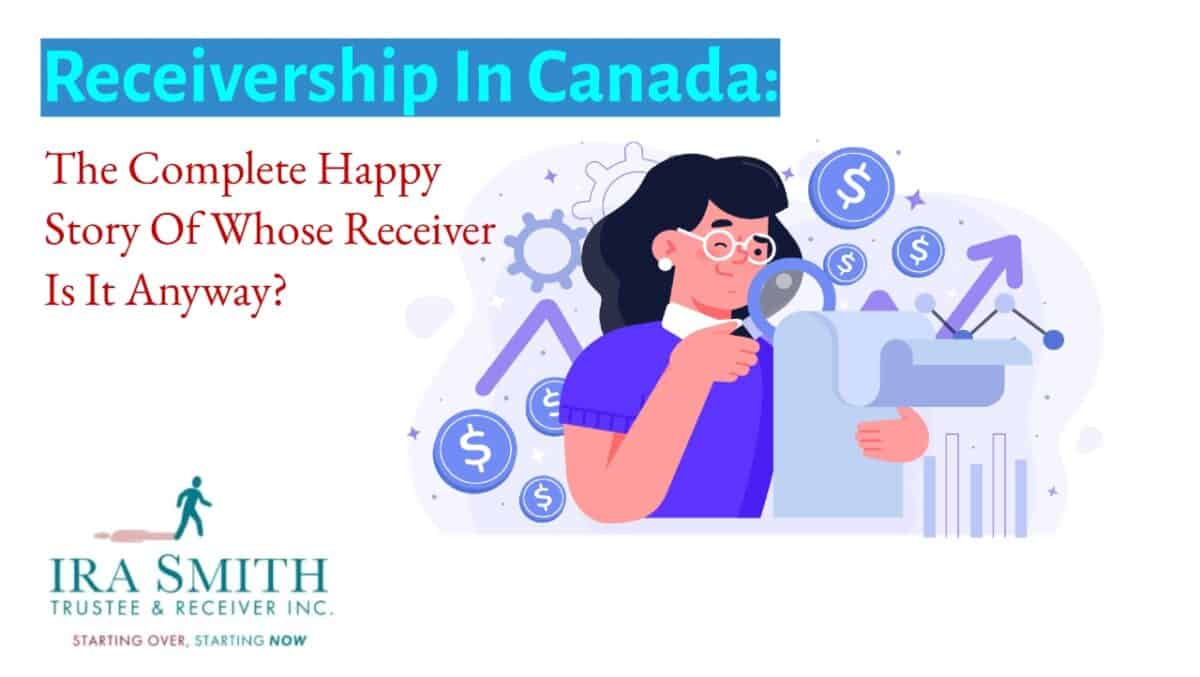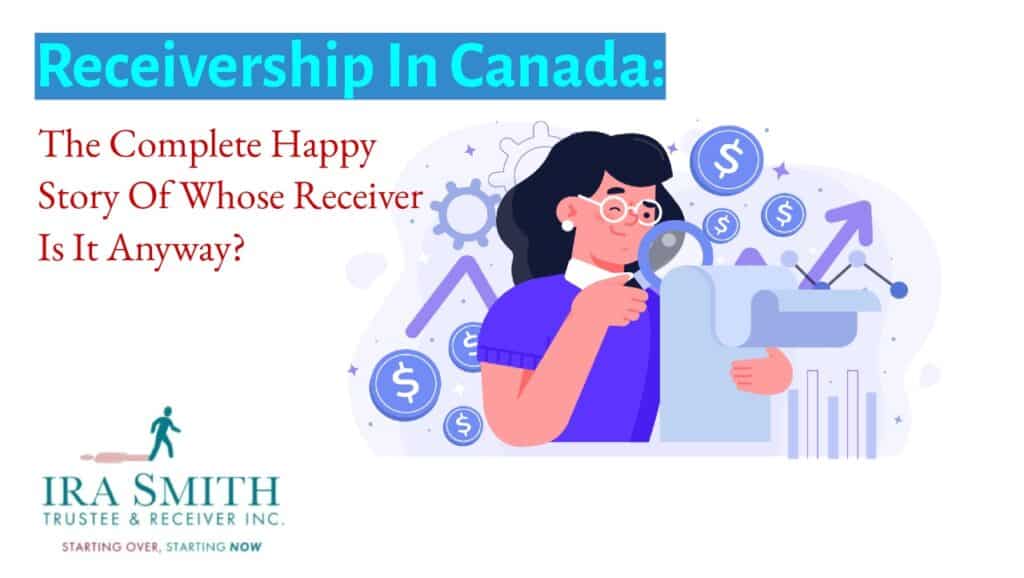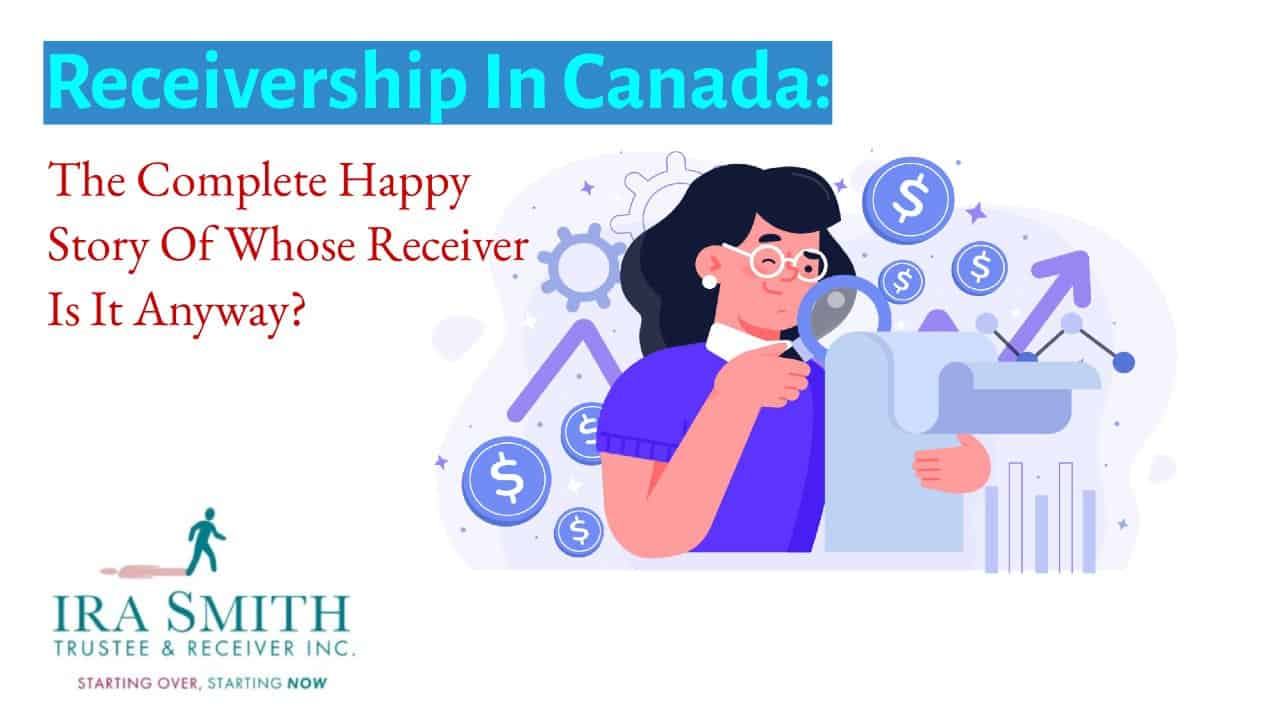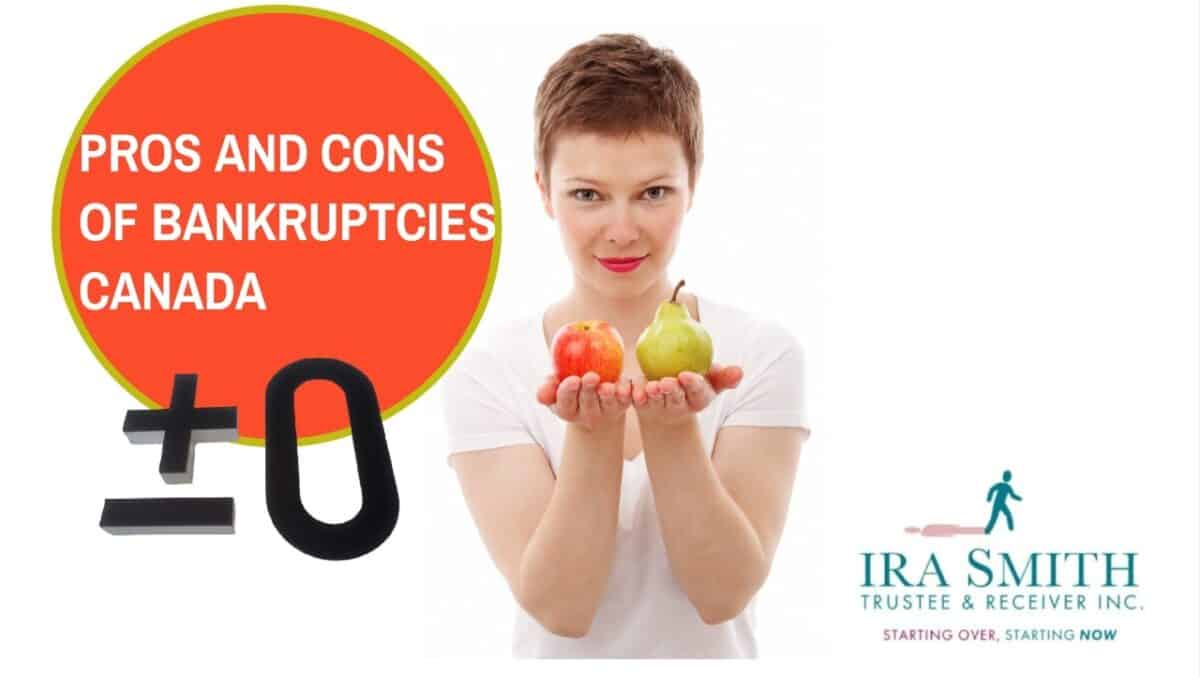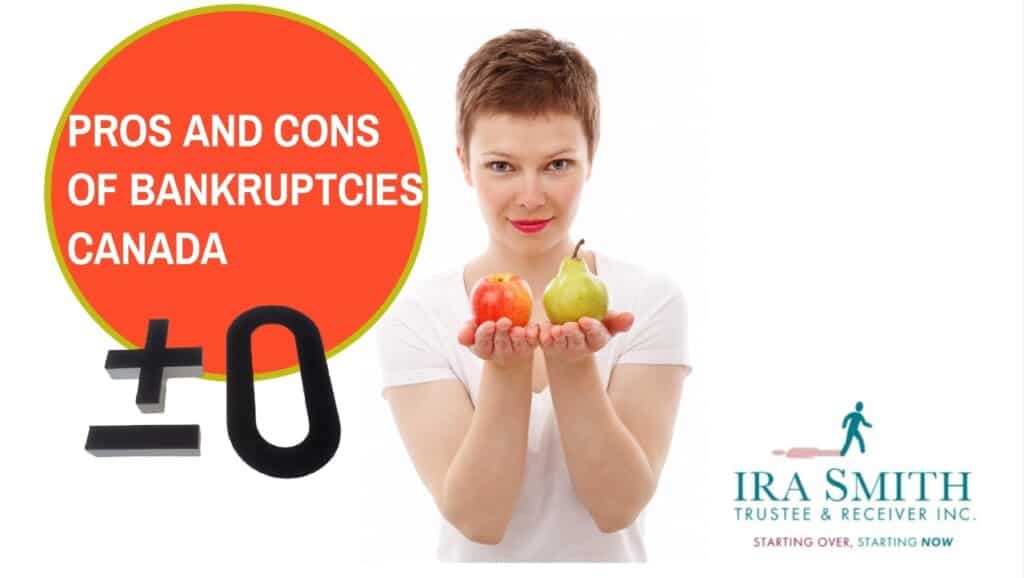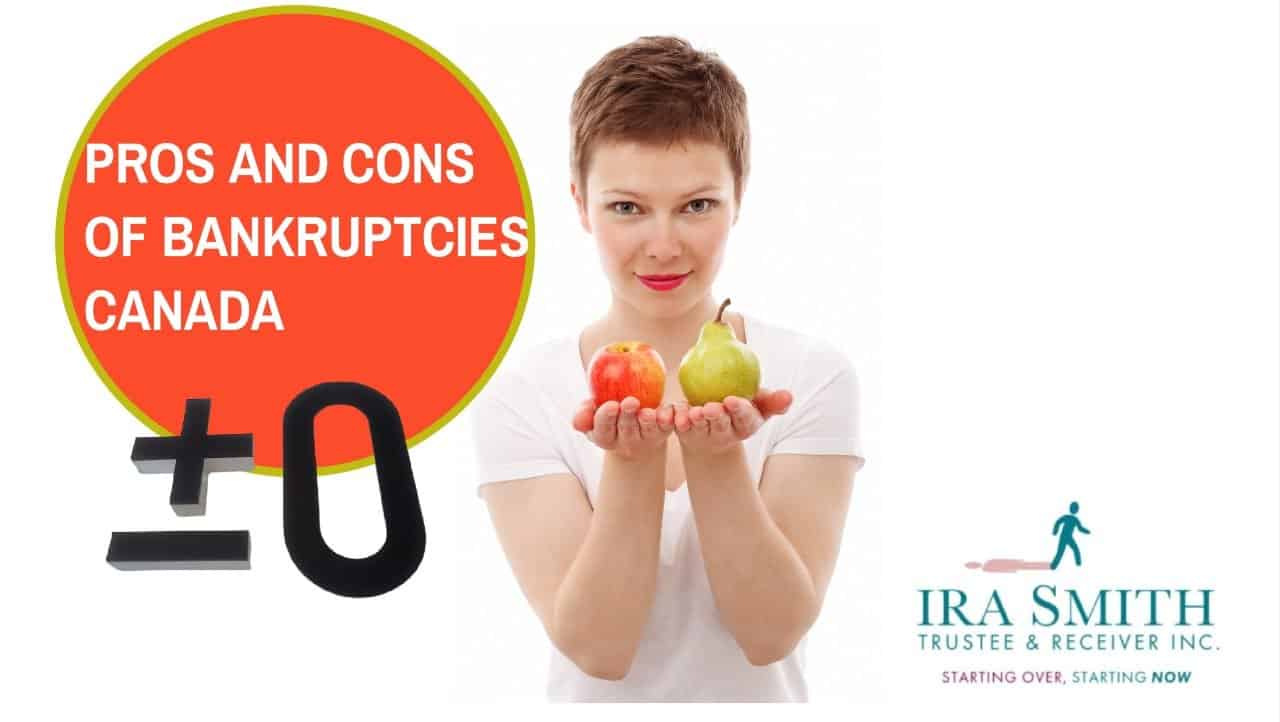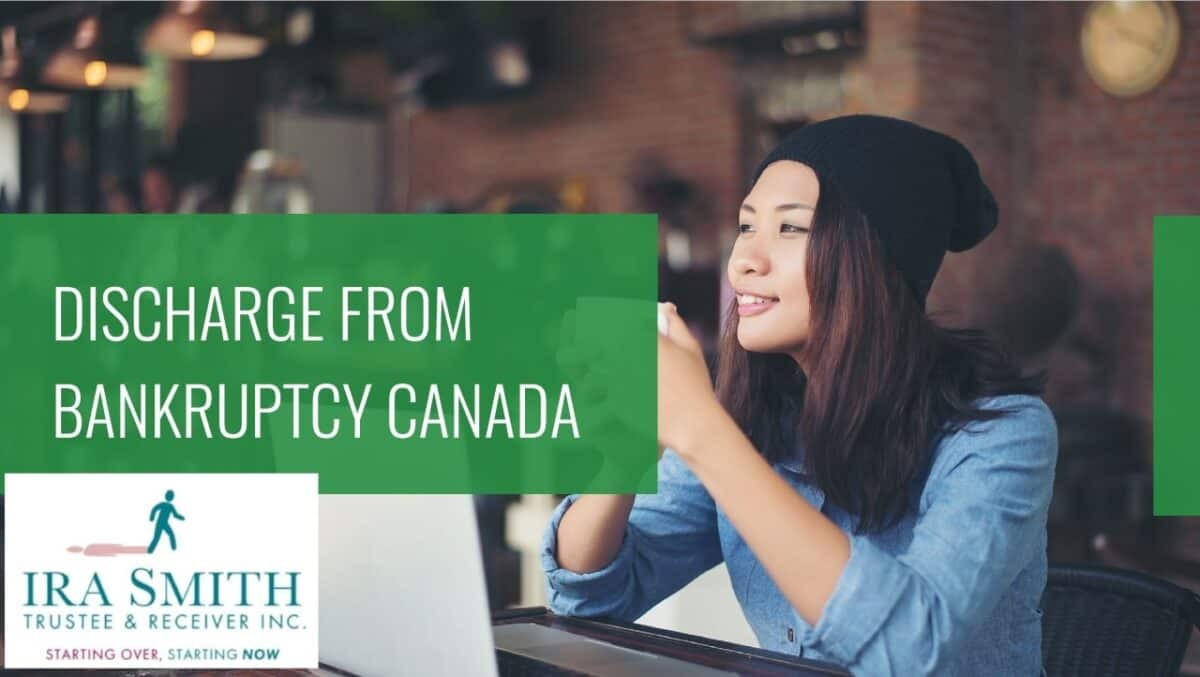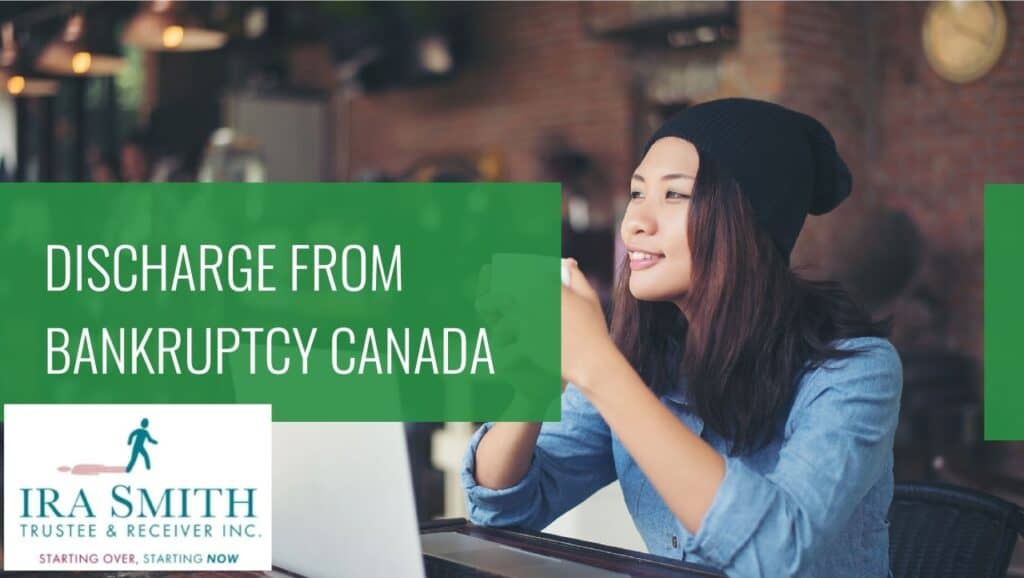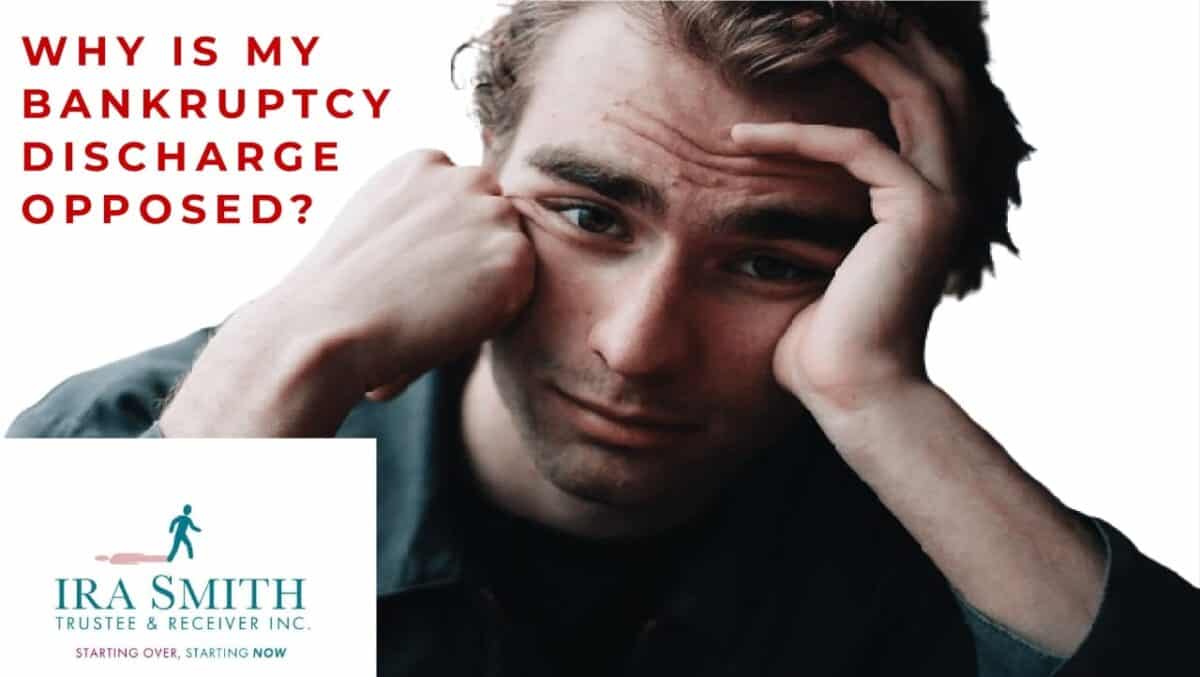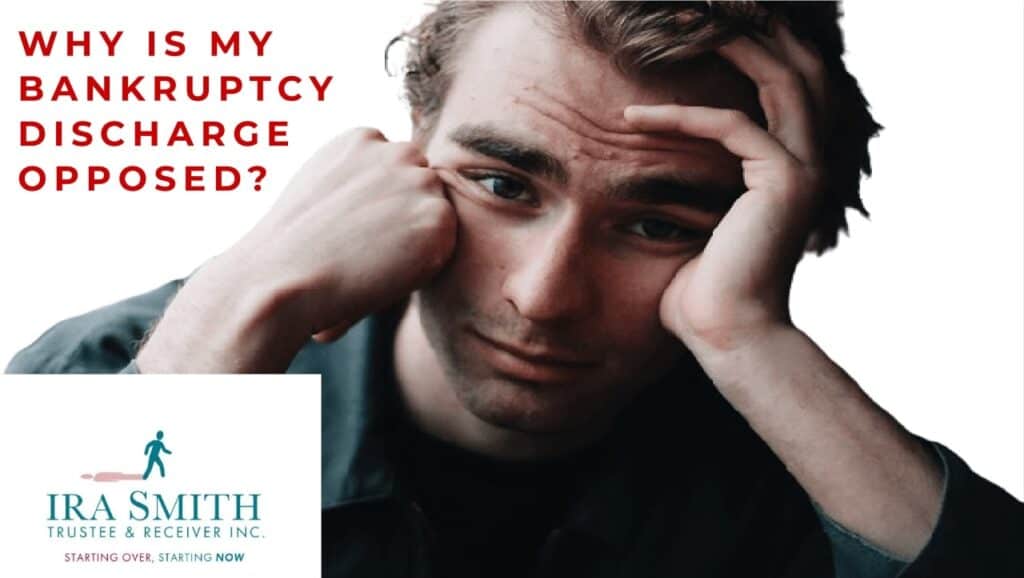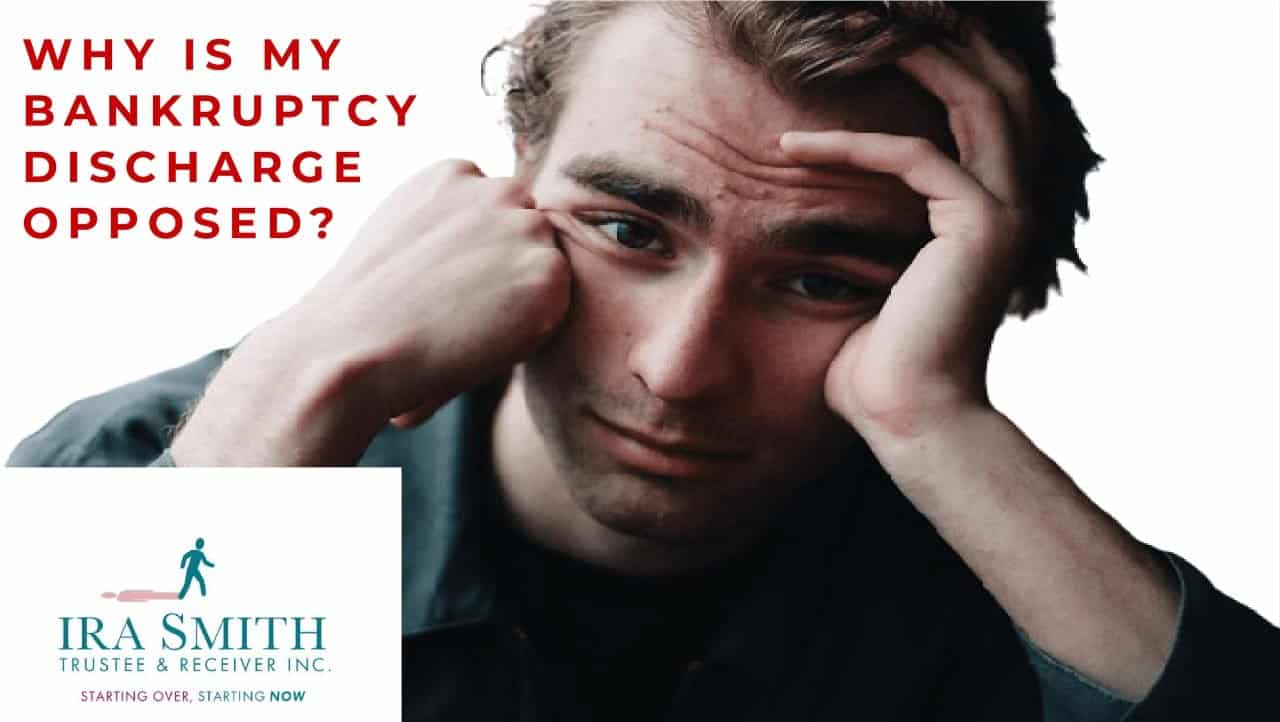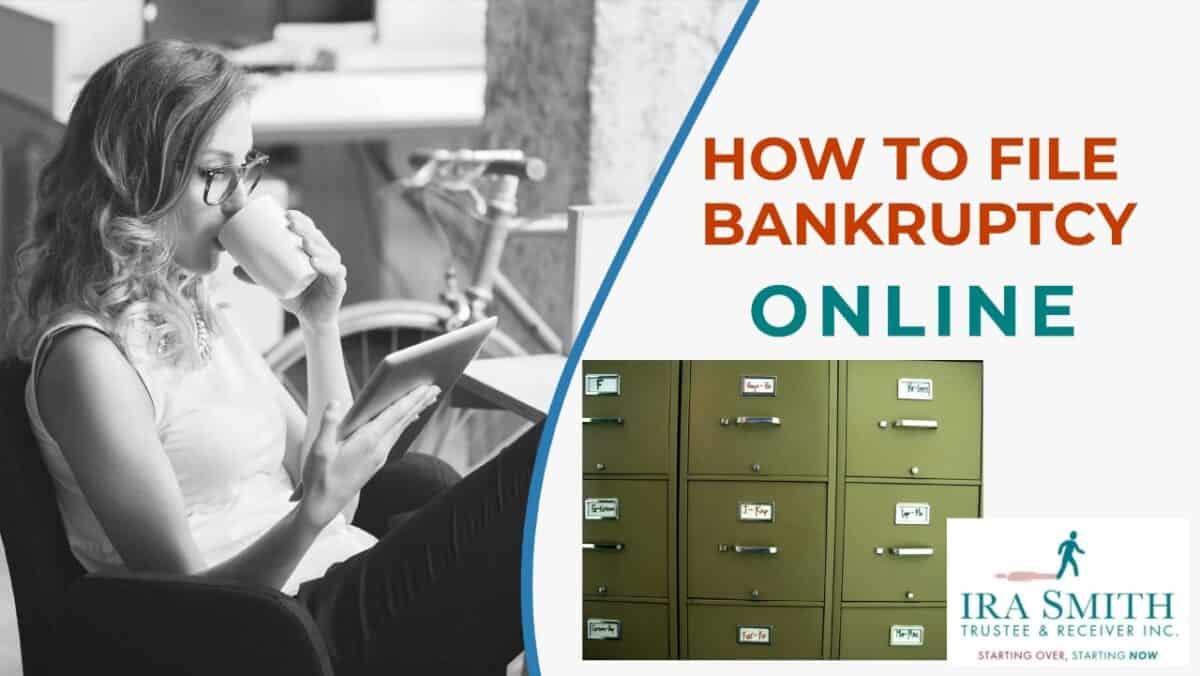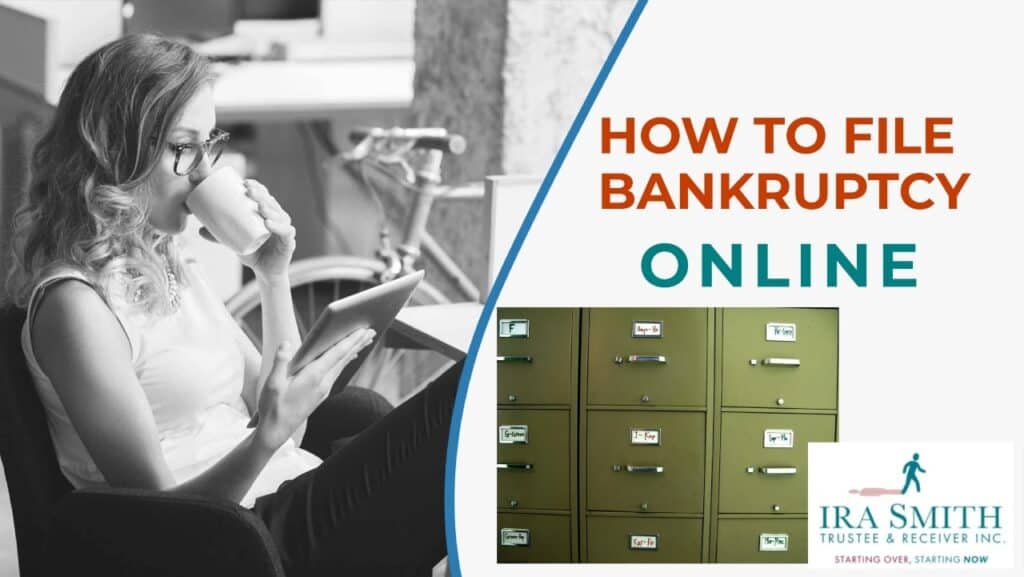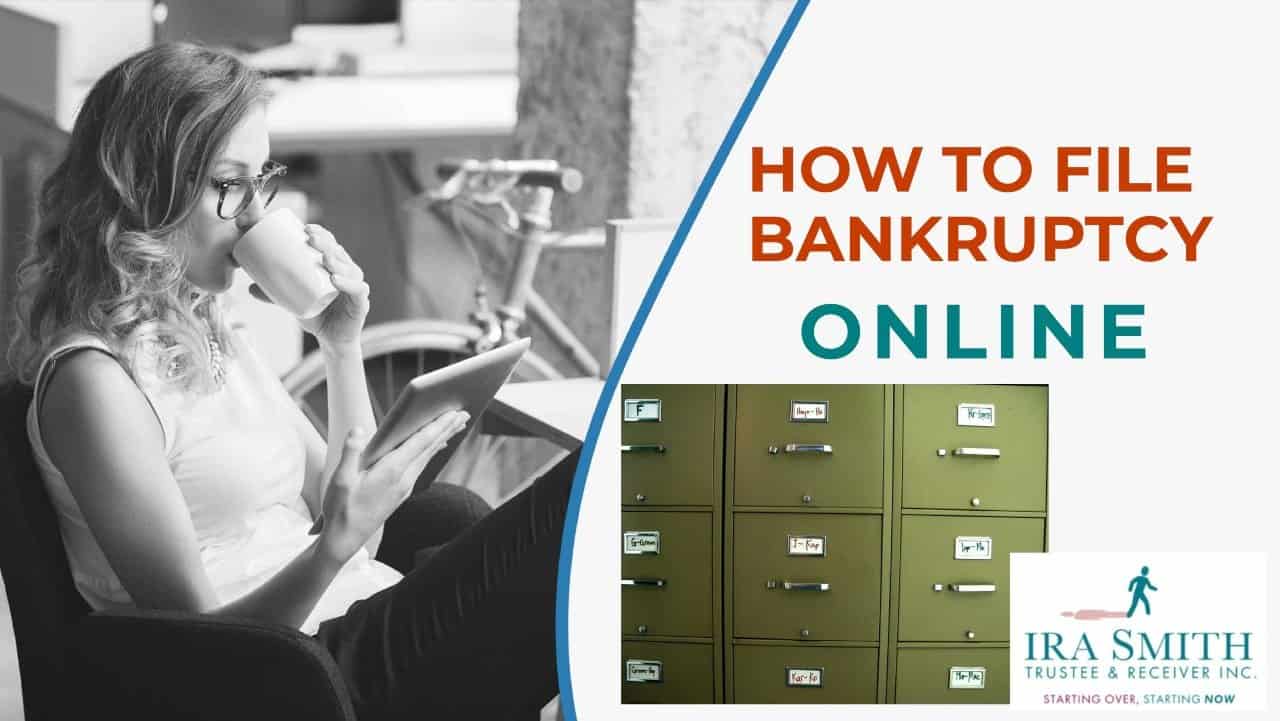Reviving a Canadian consumer proposal: Introduction
If you’re fighting with financial debts and want to stay clear of filing for bankruptcy, a consumer proposal might be a great alternative to take into consideration. A current Court decision in Ontario highlights the significance of making your Canadian consumer proposal payments on time to guarantee its success.
In this Brandon’s Blog, the situation is analyzed, as well as the factors that determine whether a Court can revive a consumer proposal more than five years after it was filed are discovered. This Brandon’s Blog provides useful information for people seeking a fresh financial start.
What a Canadian consumer proposal is all about
A Canadian consumer proposal occurs as an intricately structured contract, between an individual and their unsecured creditors, with the single function of agreeably resolving their burdensome financial debts. Once agreed to, it stands as an irrevocable pact, wielding the power to instantly save the beleaguered debtor from the unrelenting pursuit by his or her creditors, while simultaneously affording the debtor the ability to systematically repay a portion of their debts over an extended period of no more than 5 years. After making the required payments laid out within the Canadian consumer proposal, the outstanding unpaid amount is erased.
To launch a Canadian consumer proposal, one must employ the services of a duly licensed insolvency trustee, also referred to as a LIT or Trustee. The LIT meticulously scrutinizes the person’s financial world and then crafts a detailed debt settlement repayment plan for them.
The benefits of a Canadian consumer proposal
Going with a Canadian consumer proposal presents a person with the bankruptcy alternative that provides a myriad of advantages that can be likened to a world of financial peacefulness:
Immediate Shelter: Upon the submission of a Canadian consumer proposal, a debtor finds themselves wrapped up in a bulletproof shield of creditor protection. It legally protects them against the claims of their creditors. This bars creditors from starting or continuing any legal actions to recover what is owed to them. This includes collection calls and other collection actions on things like credit card debt or income tax debt.
Financial Debt Settlement: The borrower’s obligations go through a metamorphic reduction, changing them right into a workable sum that the borrower can repay over some time. As a result, just a portion of the debts are paid back. After making all the required payments, the unpaid balance is written off.
Structured Settlement Blueprint: The Canadian consumer proposal allows the debtor the opportunity to get into a binding agreement with their creditors to fix their debt problems across an extended period, not surpassing the five-year mark. This gracious break grants the borrower the latitude to pay an amount they can afford, all while finding support in the eyes of their creditors. The debtor also benefits through the two mandatory financial counselling sessions.
Unified Monthly Commitment: Instead of juggling a myriad of creditors paying them inconsistent amounts, a consumer proposal streamlines the borrower’s financial trip. Right here, the debtor need only make the agreed-upon regular payments to their appointed Trustee. The LIT manages to pay the funds out according to the ratified debt settlement plan.
Eligibility requirements for a Canadian consumer proposal
The Office of the Superintendent of Bankruptcy and the Bankruptcy and Insolvency Act (Canada) (BIA) clearly lay out the eligibility requirements for this Canadian consumer proposal legal process. People coming to grips with frustrating debt and satisfying particular financial standards could find themselves suitable prospects for starting a consumer proposal.
These prerequisites include an overall debt level ranging from $1,000 to $250,000 (not including any mortgages or lines of credit secured against the person’s principal residence), while at the same time not being able to pay their debts as they come due. An essential element for restructuring one’s financial debts within the realm of a Canadian consumer proposal is having a consistent source of income.
Additionally, individuals cannot file a second consumer proposal if they are already in one. Also, if a debtor defaults on making all the payments under a consumer proposal, they cannot file another one (more on this soon). It is necessary to understand that each person’s circumstances are unique. So consulting with a Trustee is of the utmost significance in determining one’s eligibility as well as figuring out the personalized plan for debt reduction, including the amount that needs to be paid.
Types of debt covered by a Canadian consumer proposal
A Canadian consumer proposal addresses unsecured debt responsibilities. This includes credit card indebtedness, unsecured personal loans and lines of credit, payday loans, and the worry of income tax obligations. It is incumbent to recognize that secured financial encumbrances owing to secured creditors, such as home mortgages and vehicle loans, do not drop within the ambit of consumer proposals.
Nevertheless, if a debtor’s unsecured debts are significantly affecting their ability to pay off their secured debts, the consumer proposal might yet manifest as a probable option. Student loans do not typically get discharged with consumer proposals, except in cases where the borrower has stopped being a full or part-time student for no less than 7 years.
In summation, the Canadian consumer proposal emerges as a pragmatic solution for people facing monetary problems, earnestly in search of a break from the weight of their insolvency.
Annulment of a Canadian consumer proposal
The annulment of a Canadian consumer proposal is the cancellation of the commitment binding a debtor to their creditors, as laid out in section 66.3 of the BIA. This termination transpires when the borrower either falters in the discharge of their duties or due to a change in their circumstances, making them incapable of sticking to the agreed-upon payments.
The beginning of the annulment procedure can be initiated by the LIT, functioning as the consumer proposal Administrator of a Canadian consumer proposal, or, by any of the creditors. When annulled, the borrower gives up the sanctuary provided by a Canadian consumer proposal, protecting them from legal proceedings.
Debtors need to comprehensively grasp the implications of annulment and get expert advice if they encounter difficulties in meeting their commitments. The annulment of a consumer proposal has significant financial consequences and should be avoided whenever feasible.
The Canadian consumer proposal before the Ontario Court
Background
This case, Re Cumberbatch, 2023 ONSC 5287 is very instructive. It involved a hardworking individual battling financial difficulties, who made a consumer proposal to manage her debts effectively. As she struggled to meet her monthly debt obligations, she realized that a consumer proposal could provide her with much-needed relief and a structured repayment plan.
In the case heard by the Associate Justice, his pronouncement in this circumstance conveys very useful insights. This case featured a person trying to come to grips with the unrelenting stress of financial misfortune, who, in a positive step, filed a Canadian consumer proposal as a strategic method of efficiently navigating her financial obligation problems. As she faced the tough task of meeting her financial responsibilities, the realization dawned upon her that a consumer proposal might function as the cure-all, delivering the much-coveted respite that a skillfully created structure for financial debt negotiation provides.
She approached a LIT who assessed her financial situation, including her income, expenses, and outstanding debts. After careful evaluation, the Trustee determined that she was eligible for a consumer proposal and worked with her to develop a reasonable and manageable debt repayment plan.
Before diving into the Court’s reasoning, let’s first provide some background information about the case. The consumer proposal was initially filed by the debtor to deal with her outstanding debts.
However, due to a collection of unanticipated events, the debtor defaulted under her Canadian consumer proposal by not keeping up with her payments. The debtor defaulted in making payments to the Administrator under the consumer proposal.
As a result of missing 3 months of payments due the consumer proposal was deemed annulled by subsection 66.31(1) of the BIA.
Jurisdiction to revive a Canadian consumer proposal
In the realm of bankruptcy and insolvency law, consumer proposals provide individuals with an alternative to personal bankruptcy. A consumer proposal, as defined under the Bankruptcy and Insolvency Act (BIA), allows debtors to negotiate with their creditors, proposing a plan to repay a portion of their outstanding debts. However, there are instances where a consumer proposal becomes dormant or inactive, leading to questions regarding the Court’s jurisdiction to revive such proposals after the initial five-year period.
The issue of jurisdiction was significantly addressed by the Supreme Court of Canada in the landmark case of A. Marquette & Fils Inc. v. Mercure. In that case, the Supreme Court of Canada stated about the BIA (then called the Bankruptcy Act):
“has its origins in the business world. Interpretation of it must take these origins into account. It concerns relations among businessmen, and to interpret it using an overly narrow, legalistic approach is to misinterpret it.”
In making this commentary, the highest Canadian Court said the purpose of the BIA, is to provide a framework for the effective administration of insolvency matters and to facilitate the rehabilitation of debtors. The Court acknowledged that the successful completion of a consumer proposal is aligned with this purpose, as it allows debtors to repay a portion of their debts in an organized manner.
Bankruptcy courts, applying this philosophy to consumer proposals, have determined that they have the jurisdiction to revive a Canadian consumer proposal that was annulled. The thorny issue before the Court in this case was that more than 5 years had passed since this Canadian consumer proposal was filed. The Court needed to consider if it had the jurisdiction to revive a consumer proposal that on the calendar, would take more than 5 years to complete.
Factors considered by the Court in deciding whether to revive a Canadian consumer proposal
In establishing whether to exercise its jurisdiction to revive a consumer proposal, the Court developed several factors to consider:
- The debtor’s persistence in attempting to finish the proposal within the five-year duration.
- The reasons for the consumer proposal becoming inactive.
- The prejudice or lack thereof to creditors in reviving the proposal.
- Any other pertinent factors, such as the debtor’s existing financial circumstance.
The Court emphasized that the decision to revive a dormant Canadian consumer proposal needs to be led by factors to consider fairness to both debtors and creditors. The Court needed to take on a balanced and discretionary approach when exercising its jurisdiction.
Recognizing the Court’s jurisdiction to revive a Canadian consumer proposal supplies higher clarity to debtors and creditors alike, eventually contributing to a much more reliable and equitable insolvency system.
Factors considered for reviving a Canadian consumer proposal
The LIT who acted as the consumer proposal Administrator in this Canadian consumer proposal process, made the application to the Court to revive the proposal. The Court had to take into consideration whether to provide this restoration and also evaluate the effect of reviving the proposal.
In figuring out whether a revival of that consumer proposal was appropriate, the Associate Justice meticulously analyzed different variables. These aspects played a significant role in deciding upon the expediency and justness of revitalizing this consumer proposal. Some of the crucial elements the Court took into consideration included the reason for annulment, the amount already paid under the proposal, and any creditor opposition.
Reason for annulment of the Canadian consumer proposal
The Court paid attention to the reason why the consumer proposal was initially annulled. Reasons that can lead to annulment are usually non-payment by the debtor of at least 3 months’ worth of payments or non-compliance with other provisions of the proposal. If the reason for annulment results from situations beyond the debtor’s control, such as an unexpected further financial setback such as job loss or a substantial life event, the Court may be inclined to revive a Canadian consumer proposal once the debtor shows the ability to continue and complete the outstanding payments.
However, if the reason for annulment is an outcome of the debtor’s deliberate non-payment or unyielding disregard for the proposal, the Court will probably decline a revival application. In such instances, the debtor will need to offer a convincing argument backed by evidence to show why the revival is appropriate.
Amount paid under the Canadian consumer proposal
Another vital aspect is the amount paid by the debtor under the consumer proposal before it was annulled. The Court examines whether the debtor has made a considerable contribution towards their financial obligations as agreed upon in the Canadian consumer proposal. If the debtor has fulfilled their payment responsibilities before the annulment and has shown an authentic initiative to meet their remaining financial commitment under the consumer proposal, the Court is more likely to consider the revival as a practical option.
On the other hand, if the debtor has fallen short of making significant payments or has constantly defaulted on their obligations, a revival probably will not be viewed favourably by the Court. The debtor needs to offer a legitimate reason for their previous repayment shortcomings and show the ability to fulfill the balance of the payments they originally agreed to.
Creditor opposition
The Court thinks about the level of resistance from creditors about the resurgence of the consumer proposal. Creditors play an essential function in the overall decision-making process. If a considerable variety of creditors reveal solid opposition to the revival, it can heavily affect the Court’s decision.
Nonetheless, the Court likewise considers the reasons behind creditor resistance. If creditors are opposed entirely as a result of their positions or an unwillingness to engage, the Court may offer much less weight to their arguments. On the other hand, if the creditors raise valid issues concerning the debtor’s conduct, ability to fulfill their obligations or the fairness of the recommended revival strategy, the Court will thoroughly evaluate these issues.
This Canadian consumer proposal disposition: The Court’s decision in the case of Re Cumberbatch
When it comes to Re Cumberbatch, the Associate Justice made an important choice about the revival of a Canadian consumer proposal.
The Court very carefully assessed the situation surrounding the annulment of the consumer proposal and the reasons presented in support of a revival by the Administrator. It recognized that the unintentional expiry of the proposal was not an intentional act, but instead an oversight. The Court took into consideration the best interests of all stakeholders, consisting of the debtor, the creditors, and the Administrator.
Among the key variables that influenced the Court’s decision was the reality that given that the debtor validated that she would be able to pay the balance of her Canadian consumer proposal, its revival supplied the very best possibility for the debtor to pay off a portion of her debts in an organized and structured fashion. The Court recognized that the debtor had made significant initiatives to satisfy her commitment via the original proposal, and reviving it would allow her to continue on the path toward debt resolution.
Furthermore, the Court additionally took into consideration the interest of the creditors. Reviving the consumer proposal provided a structure where they would certainly receive more of a repayment than if the consumer proposal was not revived and the debtor filed for bankruptcy.
This approach by the Court prioritized fairness as well as guaranteed that the debtor’s financial situation was managed responsibly. The Court likewise followed the Supreme Court of Canada decision as well as others, to use its jurisdiction in a reasonable as well as business-like fashion in deciding that it could revive this Canadian customer proposal, even though doing so means it would take more than 5 years for the consumer proposal to be completed.
So with this set of facts, it is feasible for a Canadian consumer proposal to be revived and finished, in more than 5 years.
Canadian consumer proposal: Conclusion
In the matter of Re Cumberbatch, the Court’s deliberation regarding the approval of the Administrator’s request to reinstate the consumer proposal exemplifies the unwavering dedication of the judicial system to equity and the facilitation of avenues for debtors to remedy their fiscal obligations through the Canadian insolvency legislation. This particular case vividly underscores the paramount importance of procedural precision. Furthermore, it underscores the imperative need to ensure that unforeseeable external factors, which lie beyond the debtor’s sphere of control and yet obstruct the successful completion of a Canadian consumer proposal within the stipulated 5-year timeframe, do not constitute an impediment to the equitable resolution of debt-related affairs.
I hope you enjoyed this Canadian consumer proposal Brandon’s Blog. If you’re struggling with managing your overwhelming debt in a high-interest environment, don’t worry – there are some things you can do to take control of the situation. First, it’s important to create a realistic budget and track your expenses. From there, you can prioritize your debt repayment and make consistent payments to chip away at what you owe. It’s also a good idea to seek professional financial advice to help guide you through the process. Just remember, managing debt is a gradual process that requires commitment and determination, but you can do it! So don’t hesitate to reach out for help from financial professionals.
Individuals and business owners must take proactive measures to address financial difficulties and promptly seek assistance when necessary. It is crucial to recognize that financial stress is a prevalent concern and seeking help is a demonstration of fortitude, rather than vulnerability. Should you encounter challenges in managing your finances and find yourself burdened by stress, do not delay in pursuing aid.
Revenue and cash flow shortages are critical issues facing people, entrepreneurs and their companies and businesses with debt problems that are in financial distress. Are you now worried about just how you or your business are going to survive? Are you worried about what your fiduciary obligations are and not sure if the decisions you are about to make are the correct ones to avoid personal liability? Those concerns are obviously on your mind.
The Ira Smith Team understands these financial health concerns. More significantly, we know the requirements of the business owner or the individual who has way too much financial debt. You are trying to manage these difficult financial problems and you are understandably anxious.
It is not your fault you can’t fix this problem on your own and it does not mean that you are a bad person. The pandemic has thrown everyone a curveball. We have not been trained to deal with this. You have only been taught the old ways. The old ways do not work anymore. The Ira Smith Team uses innovative and cutting-edge methodologies, to adeptly navigate you through the intricacies of your financial challenges, ensuring a resolution to your debt-related predicaments without resorting to the rigours of the bankruptcy process. We can get you debt relief now!
We have helped many entrepreneurs and their insolvent companies who thought that consulting with a Trustee and receiver meant their company would go bankrupt. On the contrary. We helped turn their companies around through financial restructuring.
We look at your whole circumstance and design a strategy that is as distinct as you are. We take the load off of your shoulders as part of the debt settlement strategy we will draft just for you.
The Ira Smith Trustee & Receiver Inc. team understands that people facing money problems require a lifeline. That is why we can establish a restructuring procedure for you and end the discomfort you feel.
Call us now for a no-cost consultation. We will listen to the unique issues facing you and provide you with practical and actionable ideas you can implement right away to end the pain points in your life, Starting Over, Starting Now.